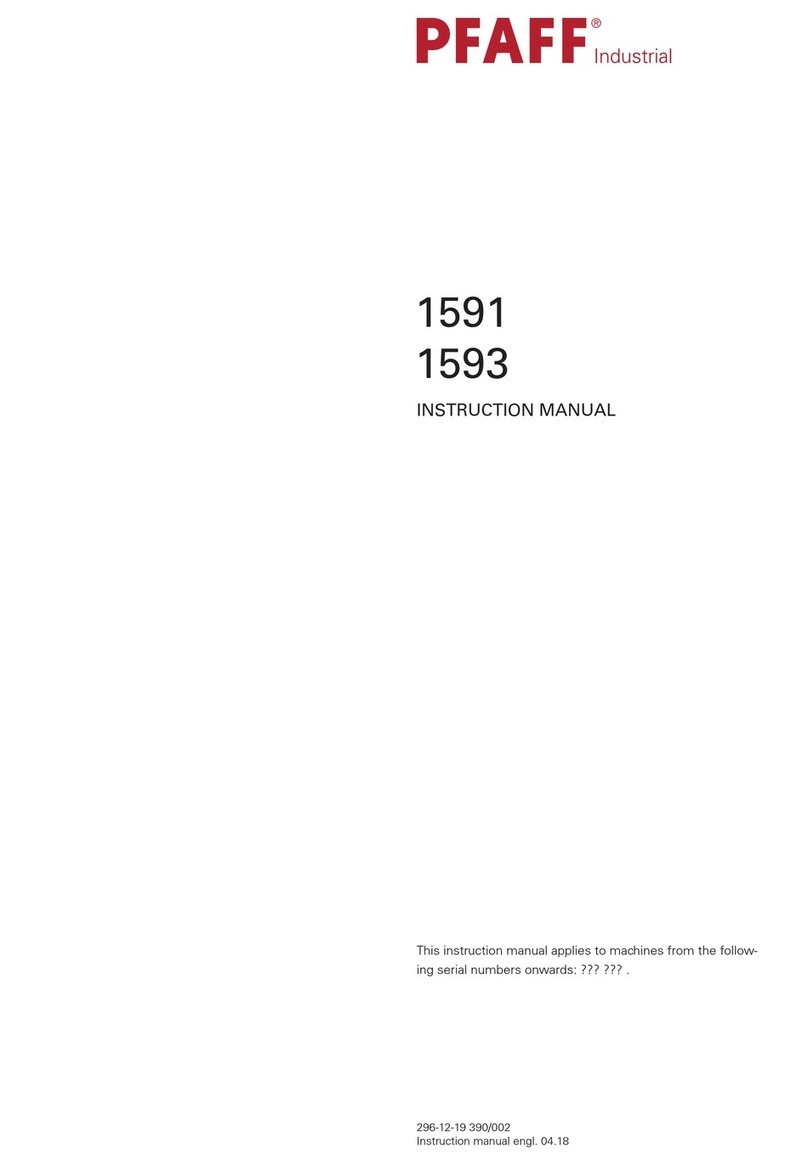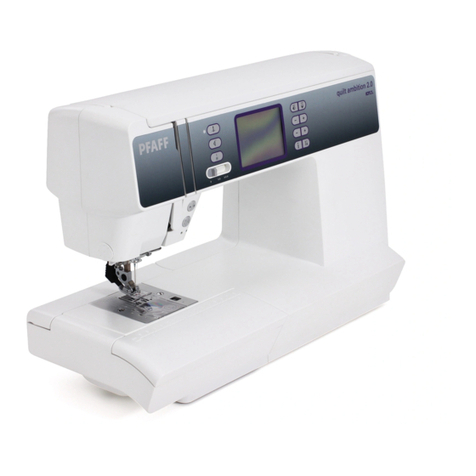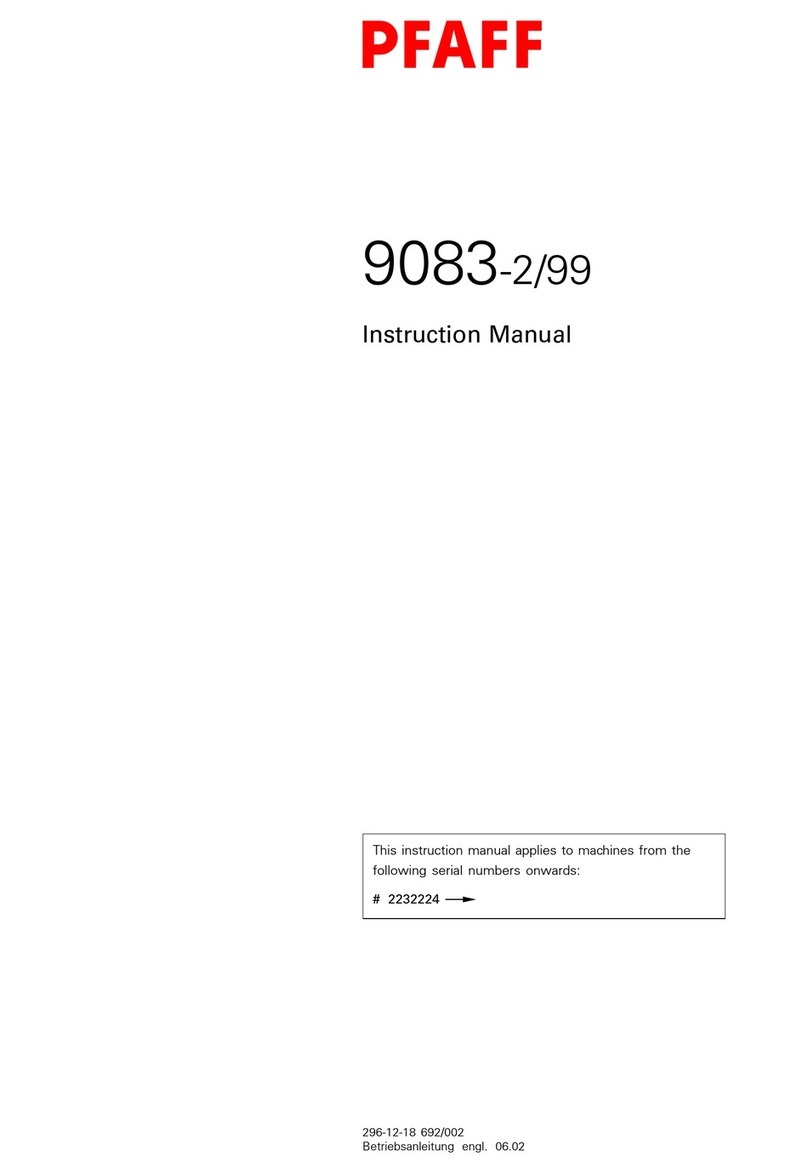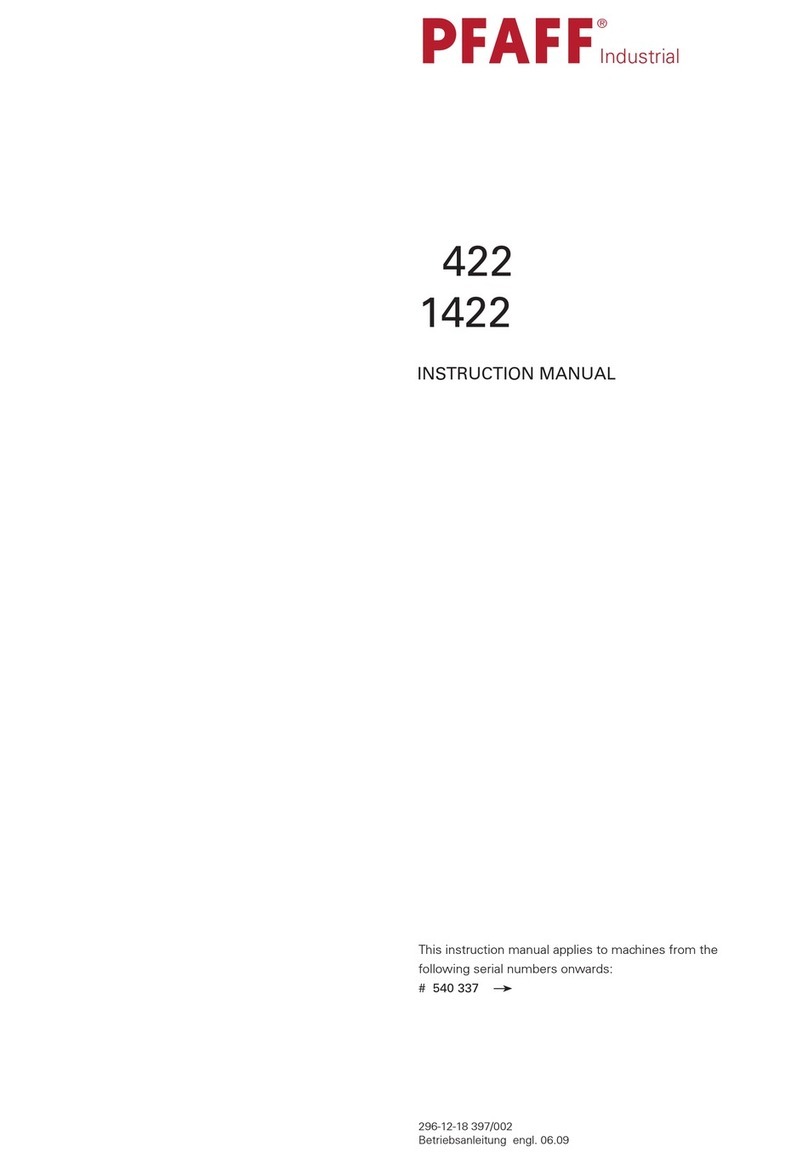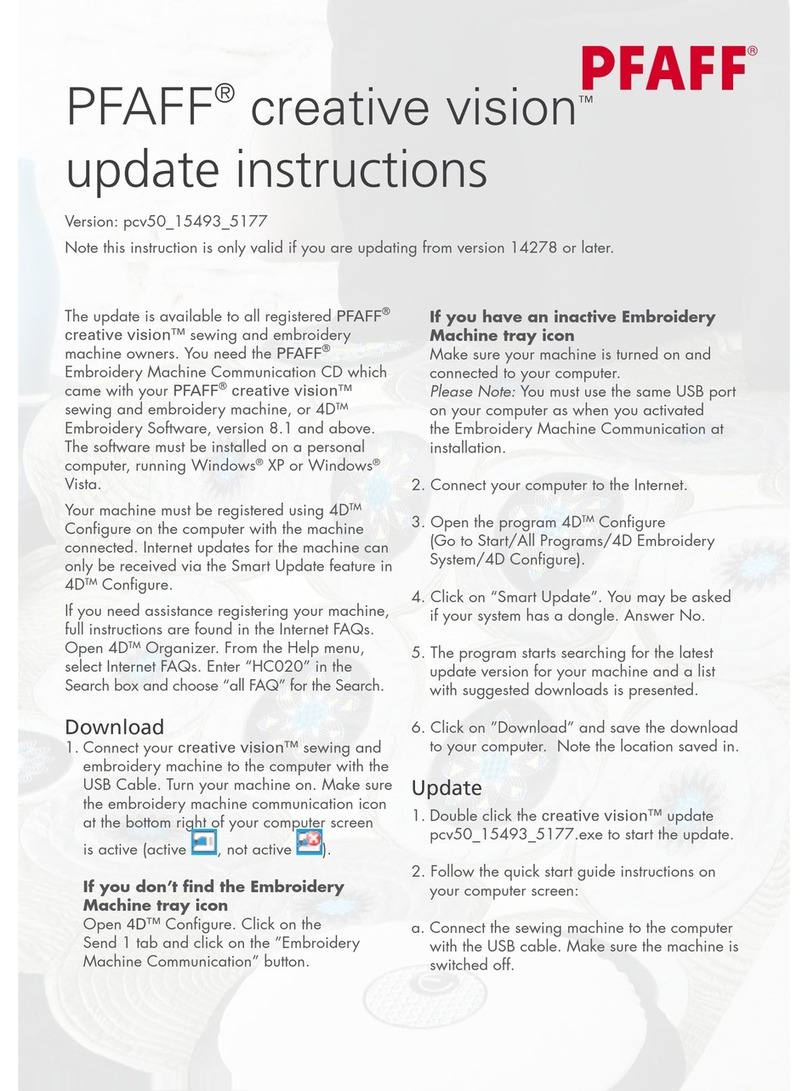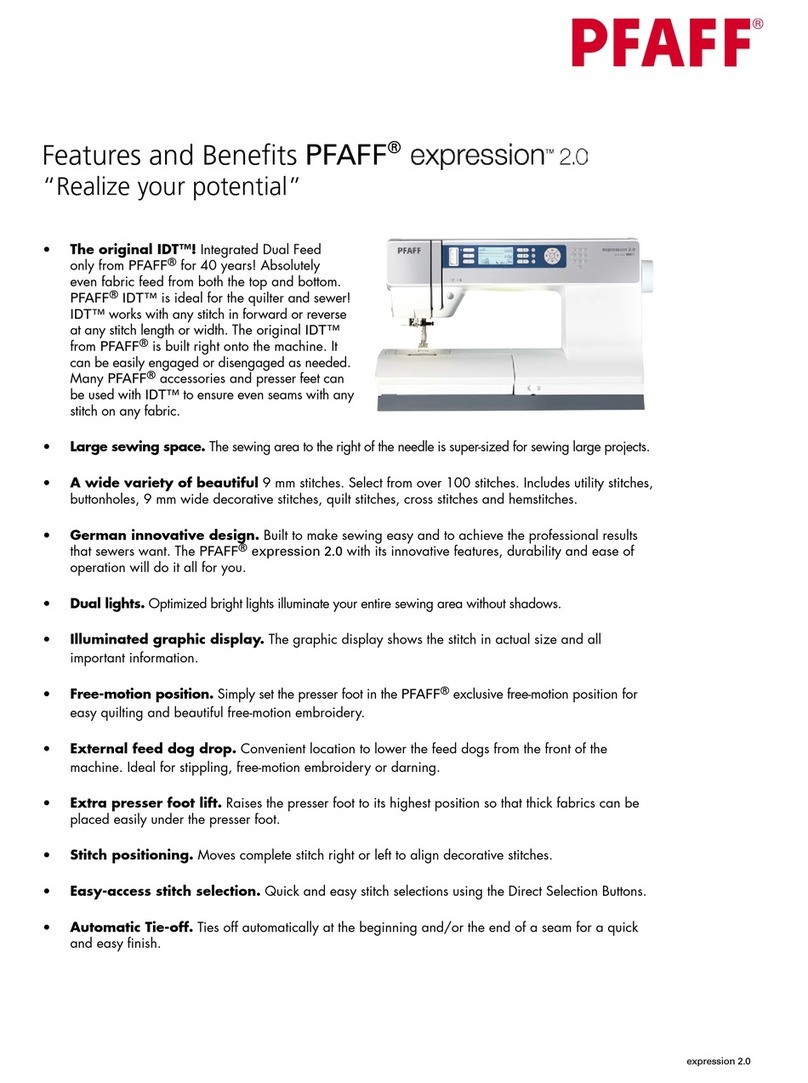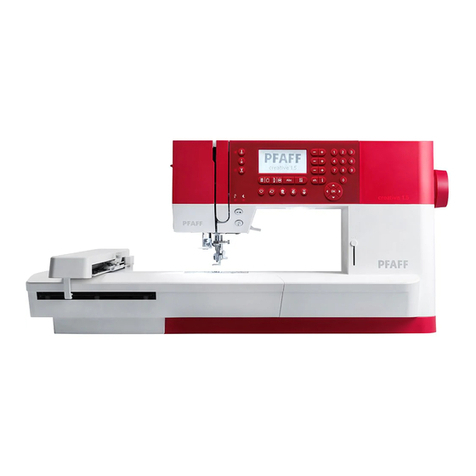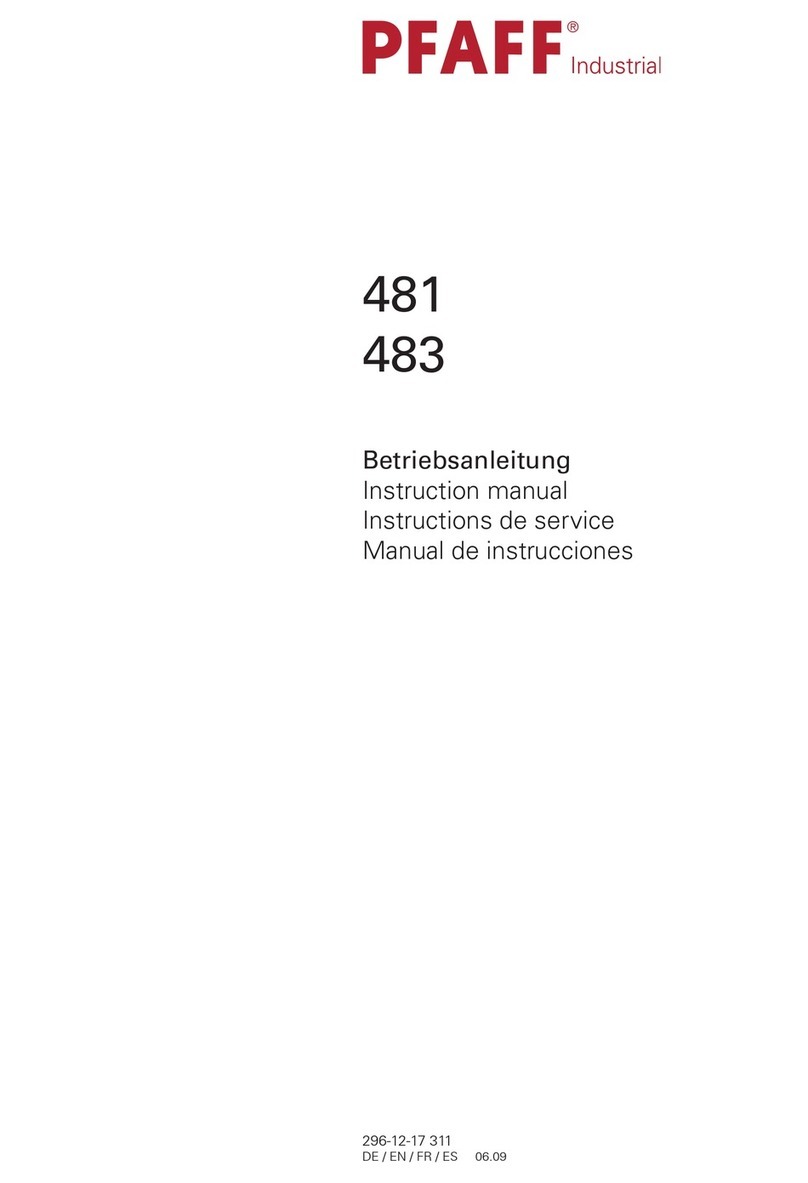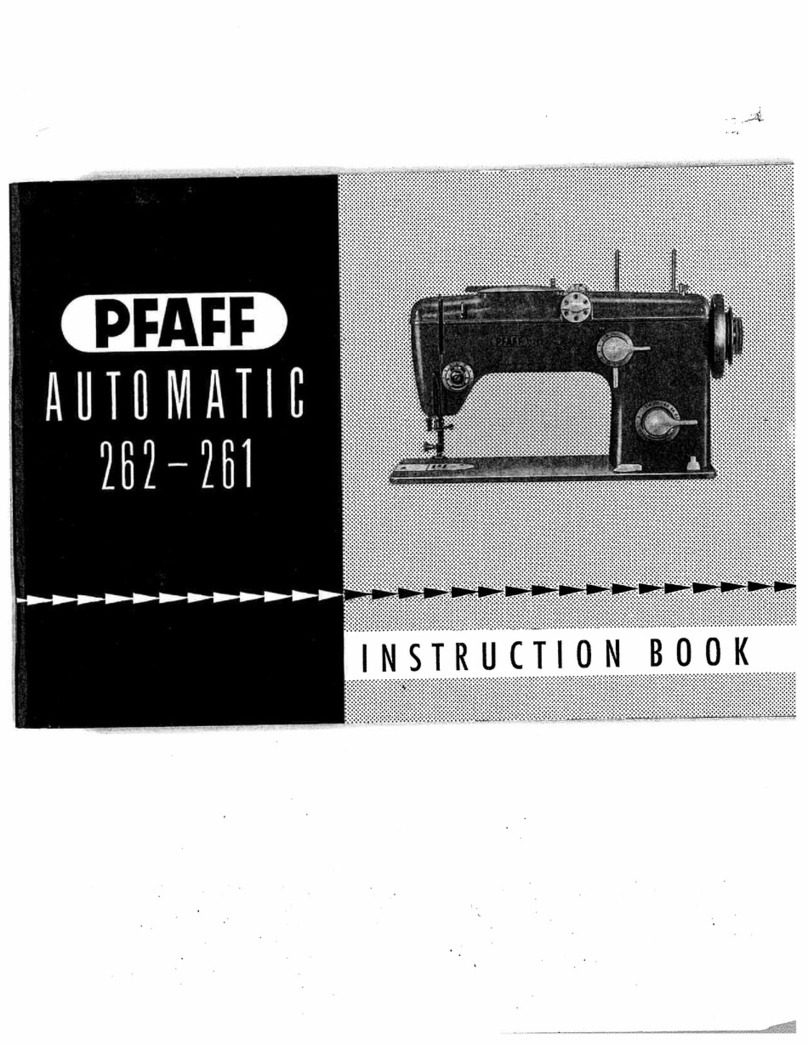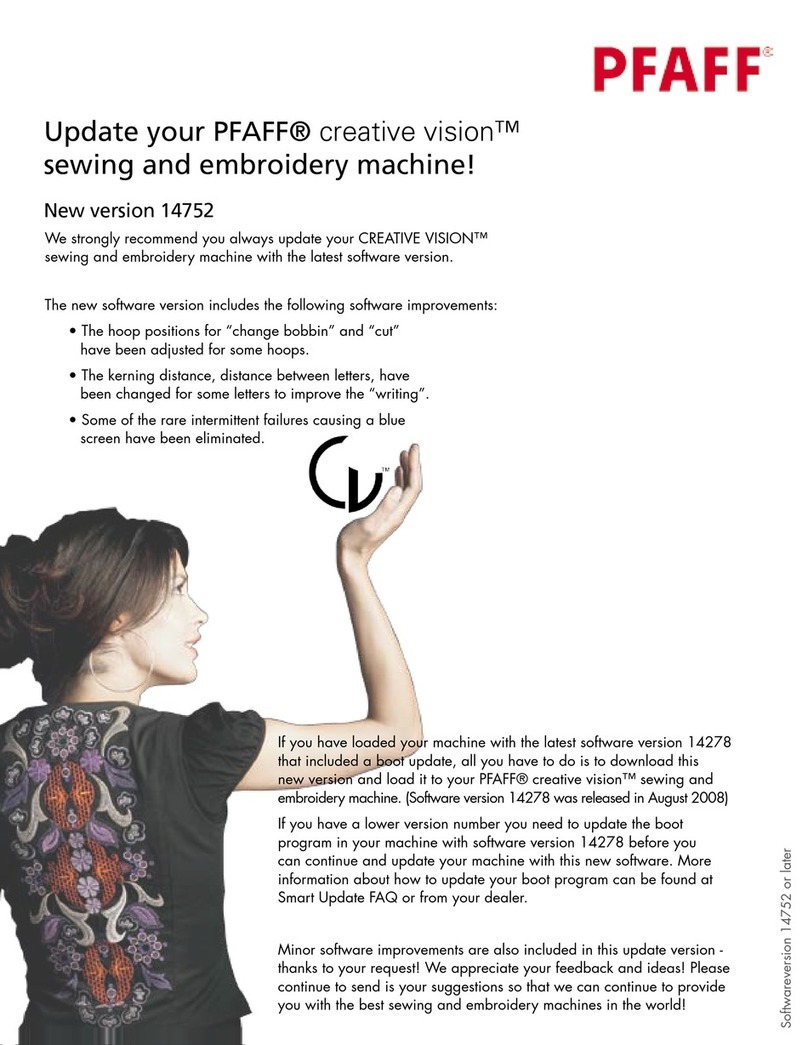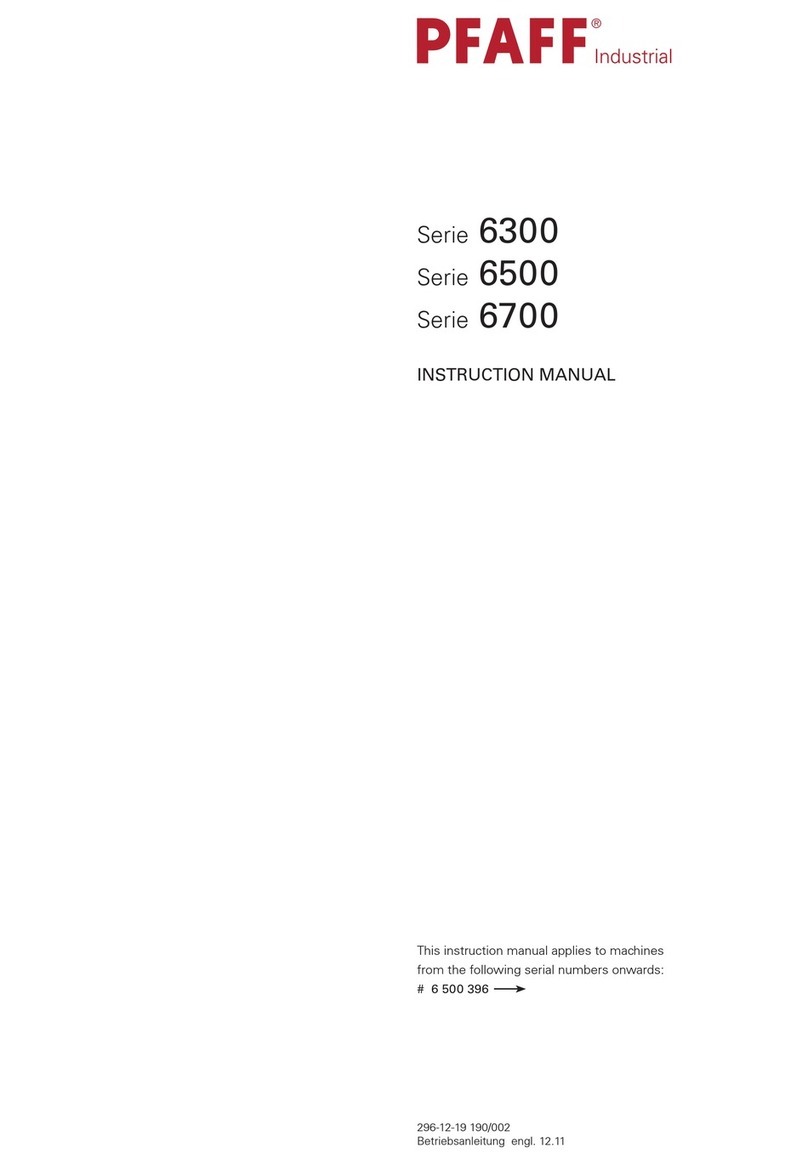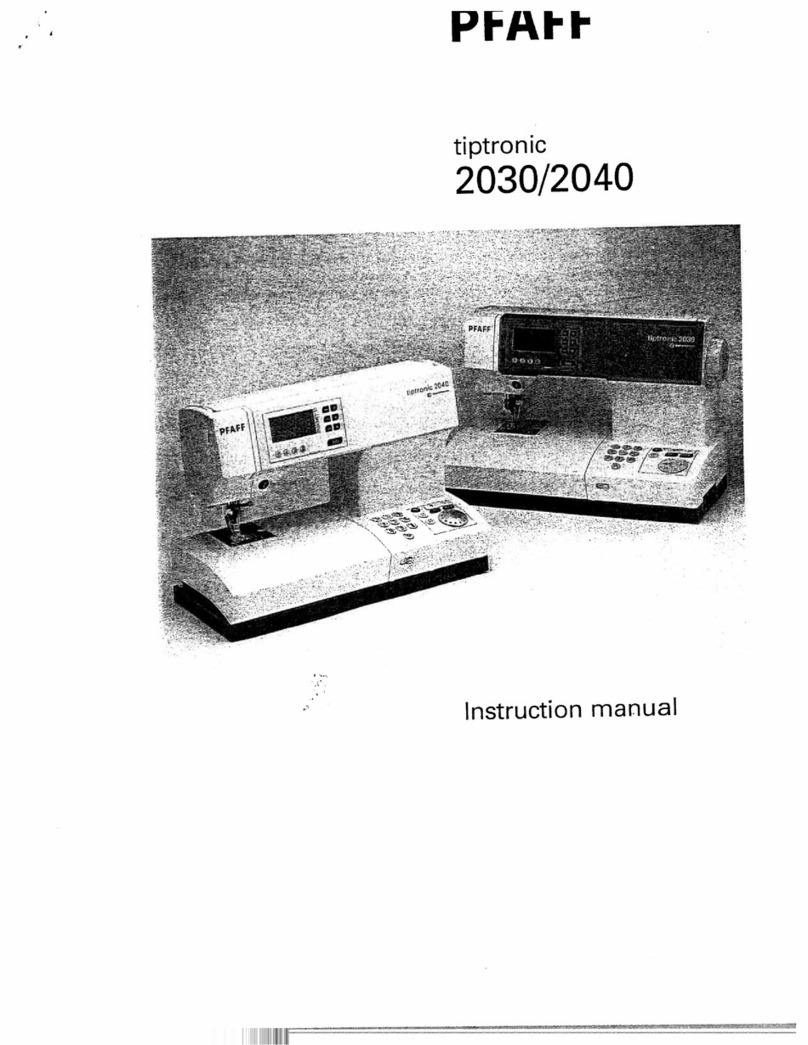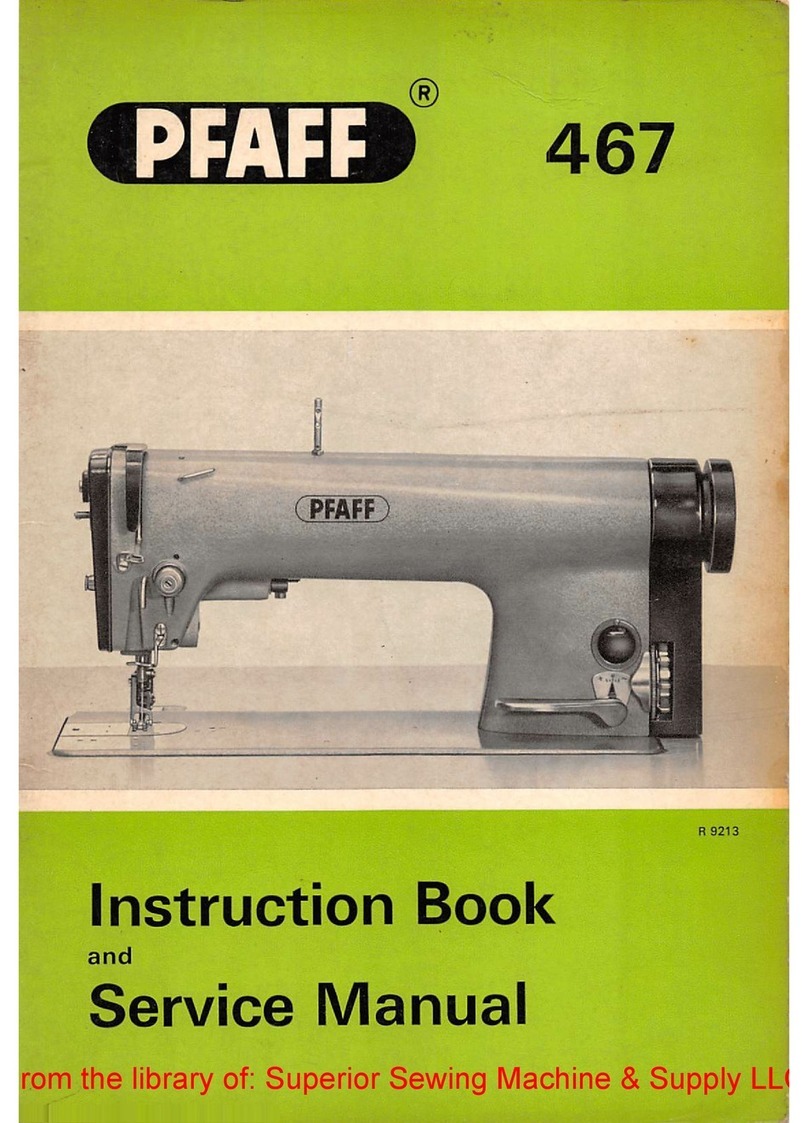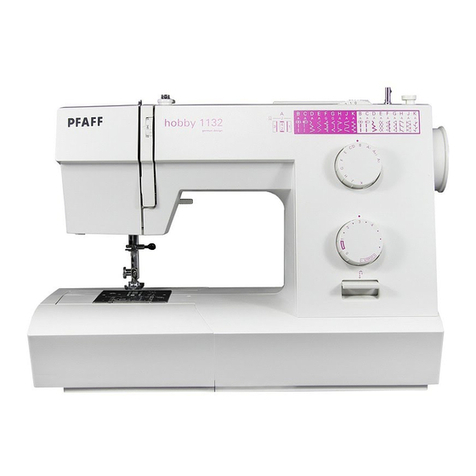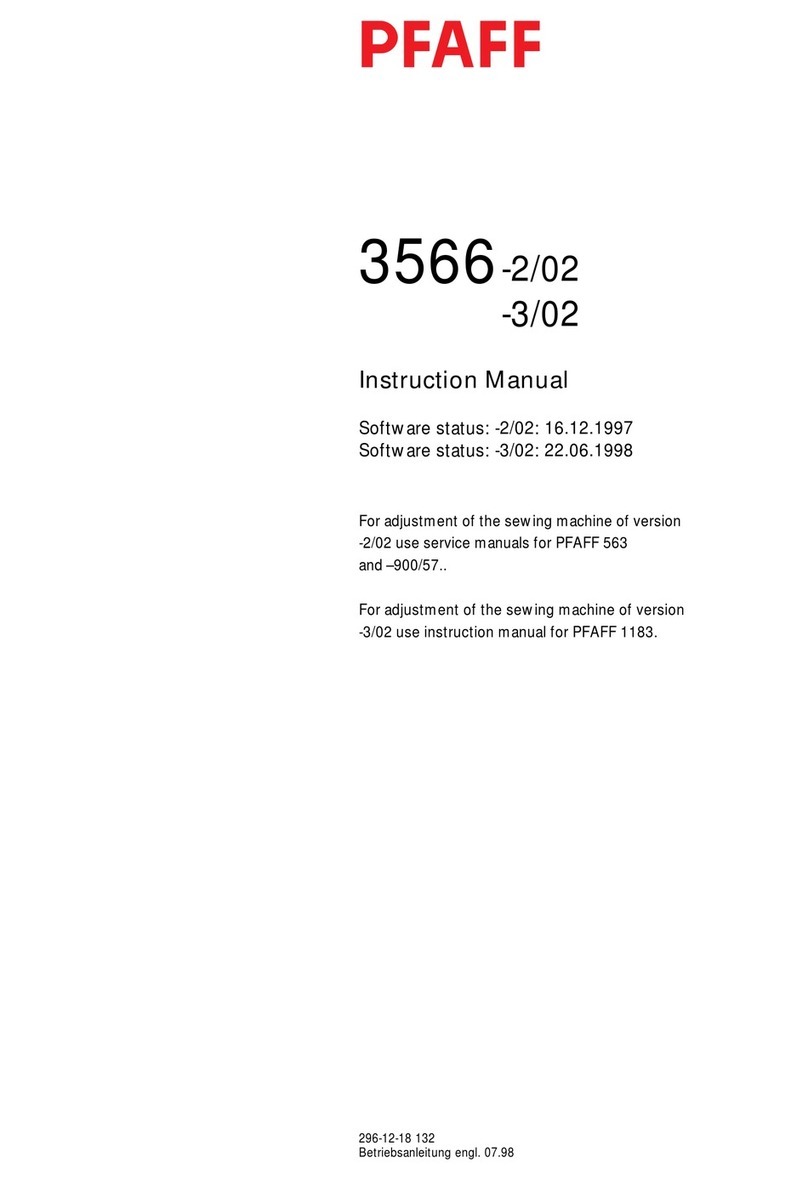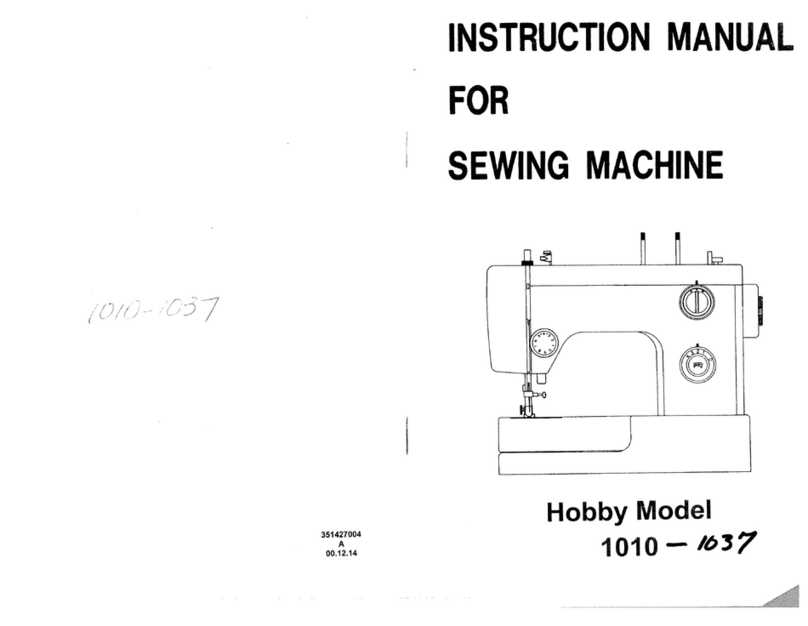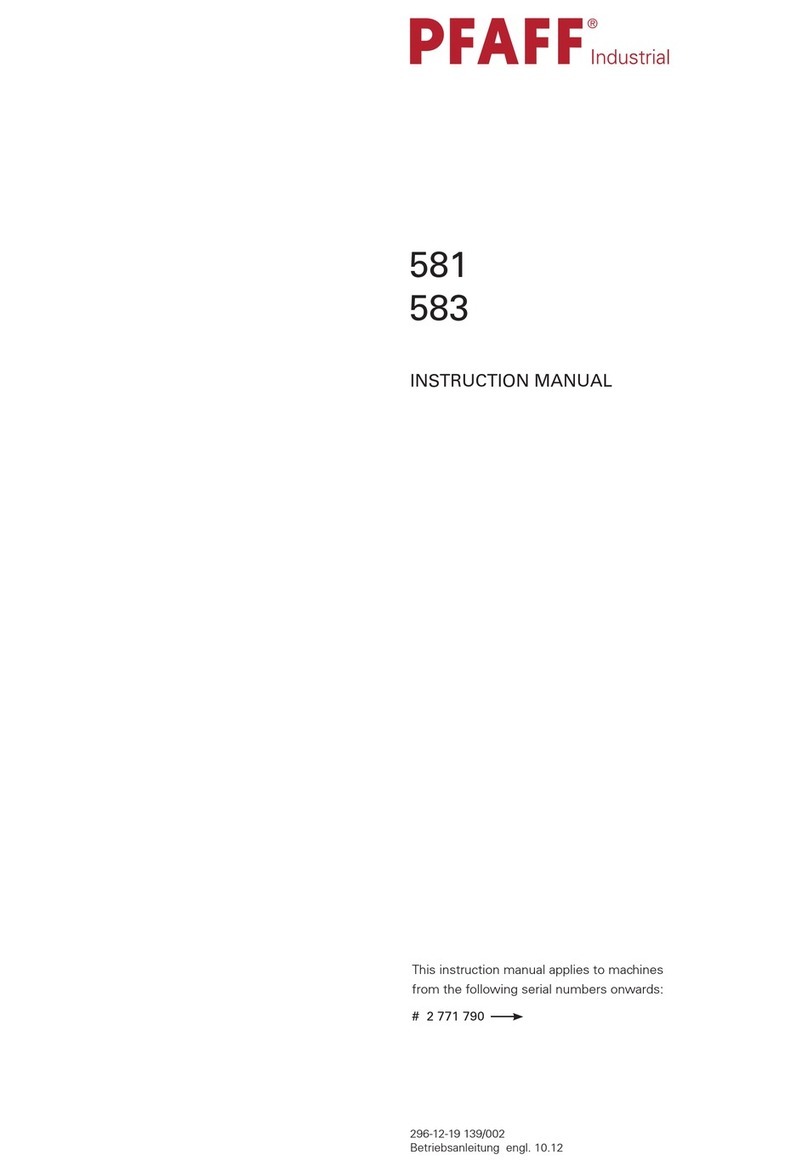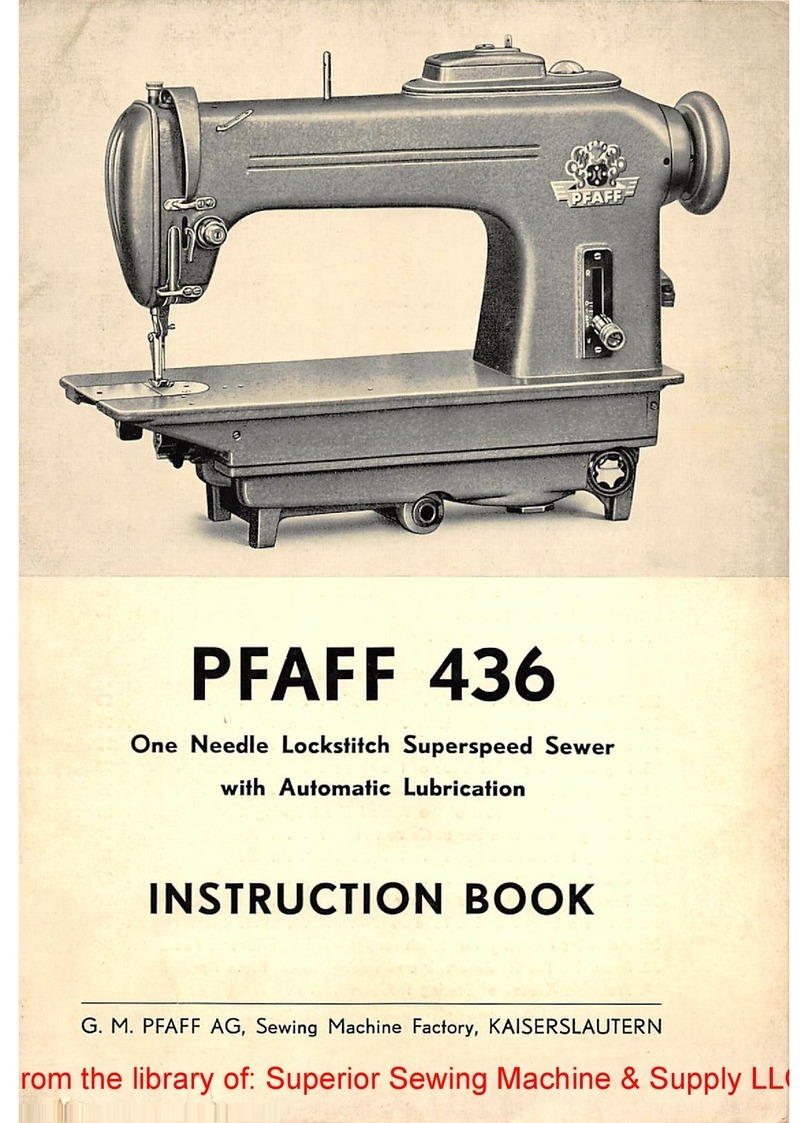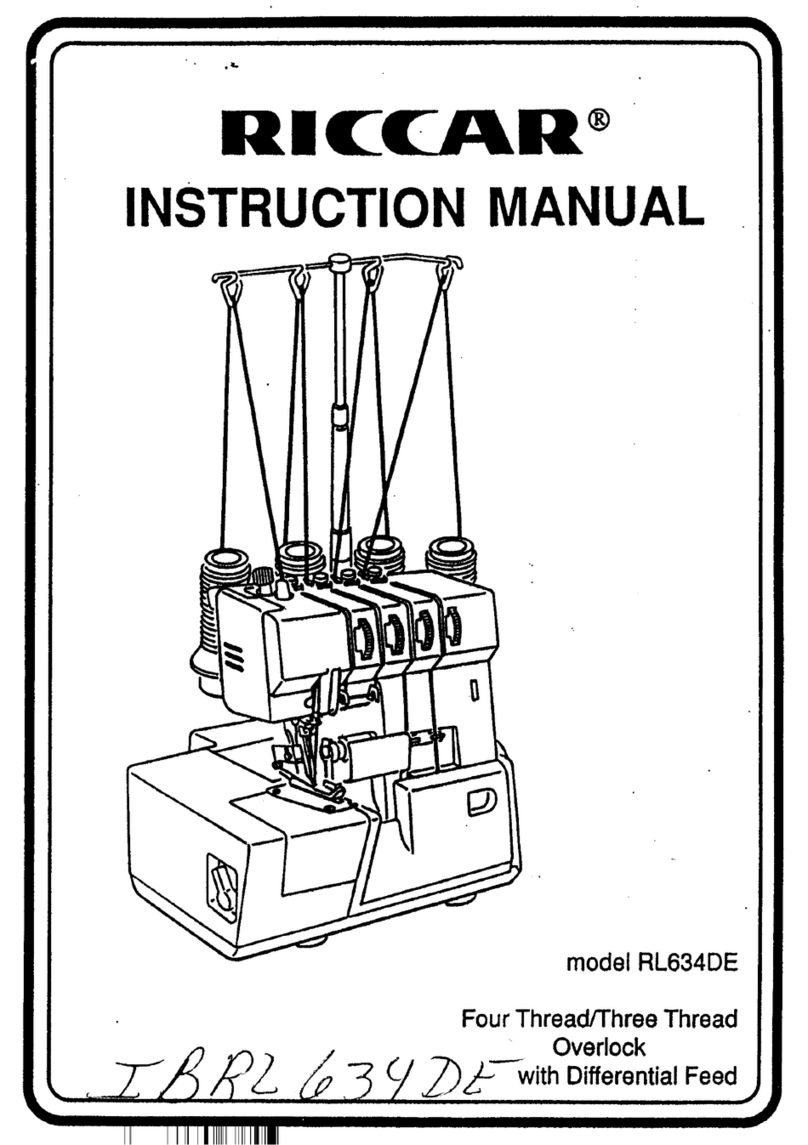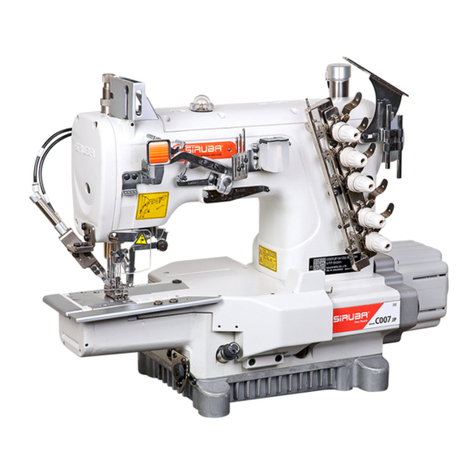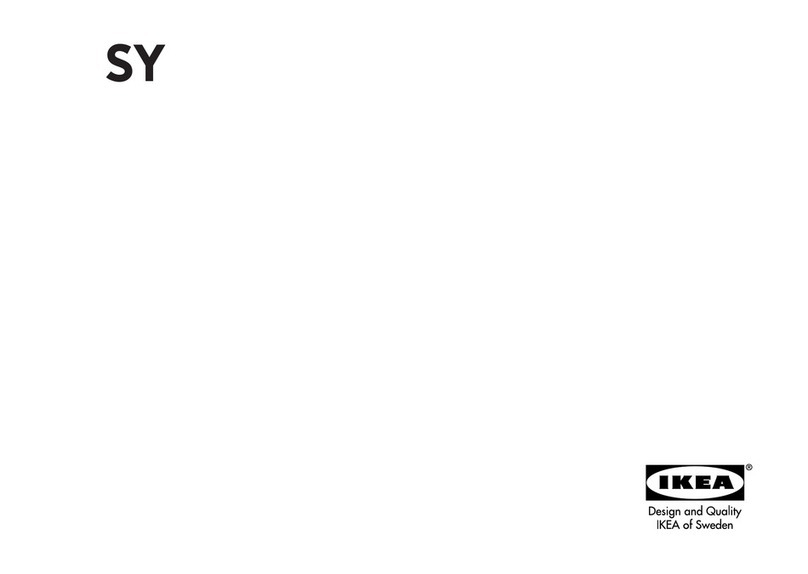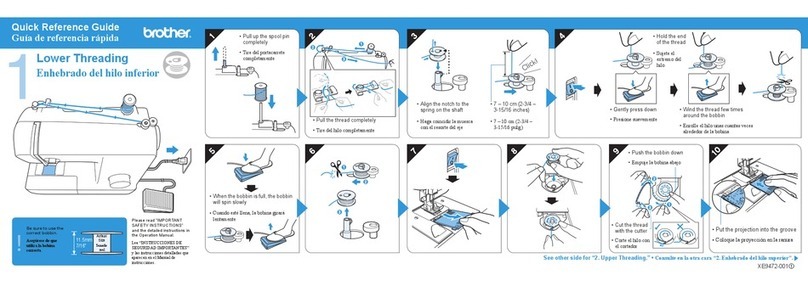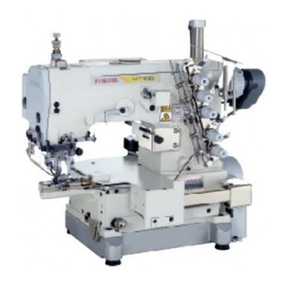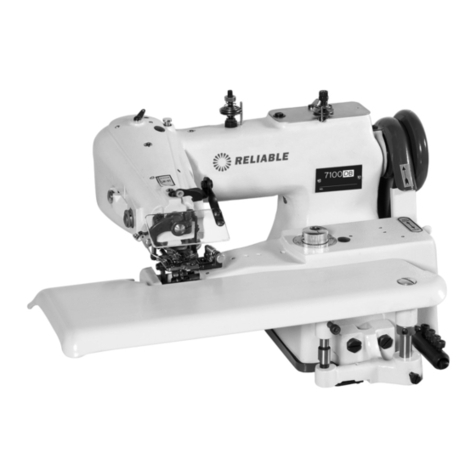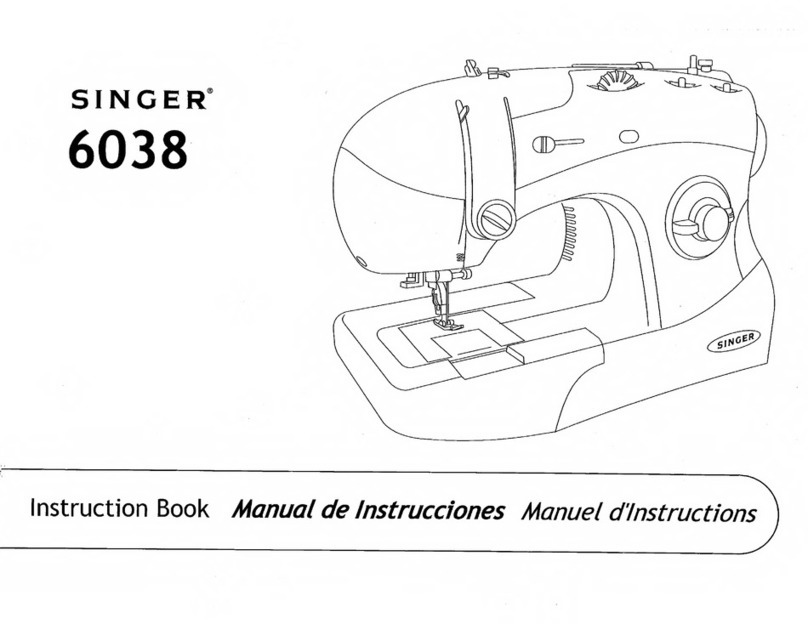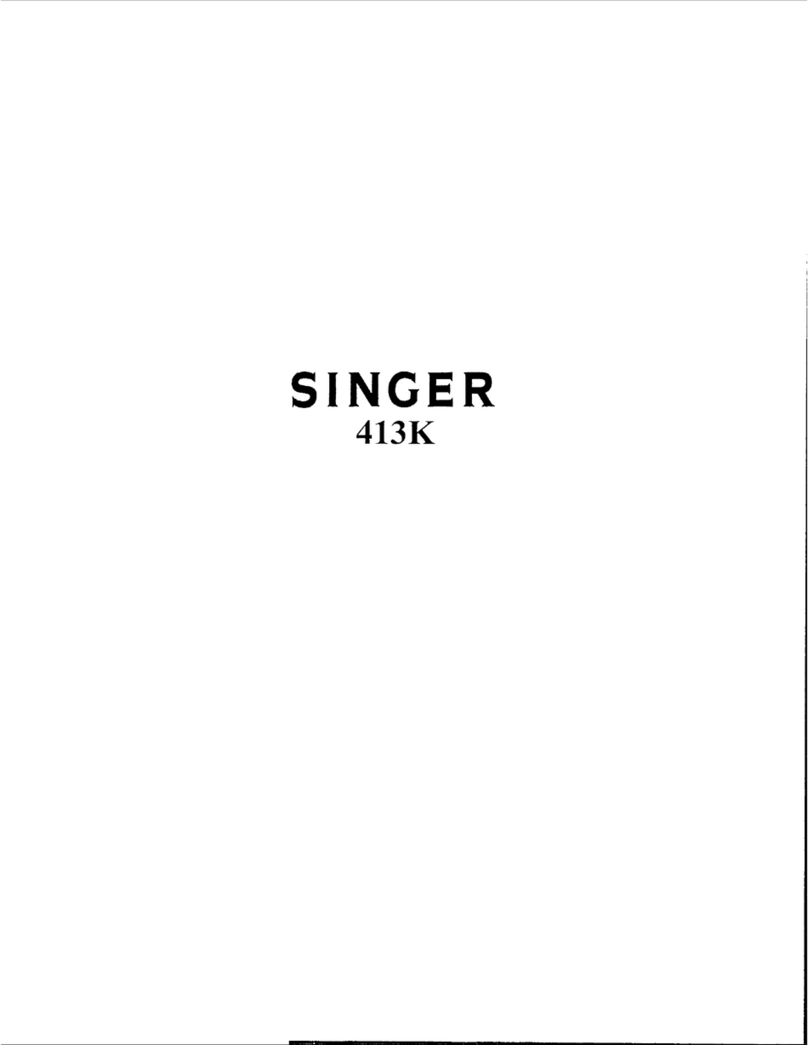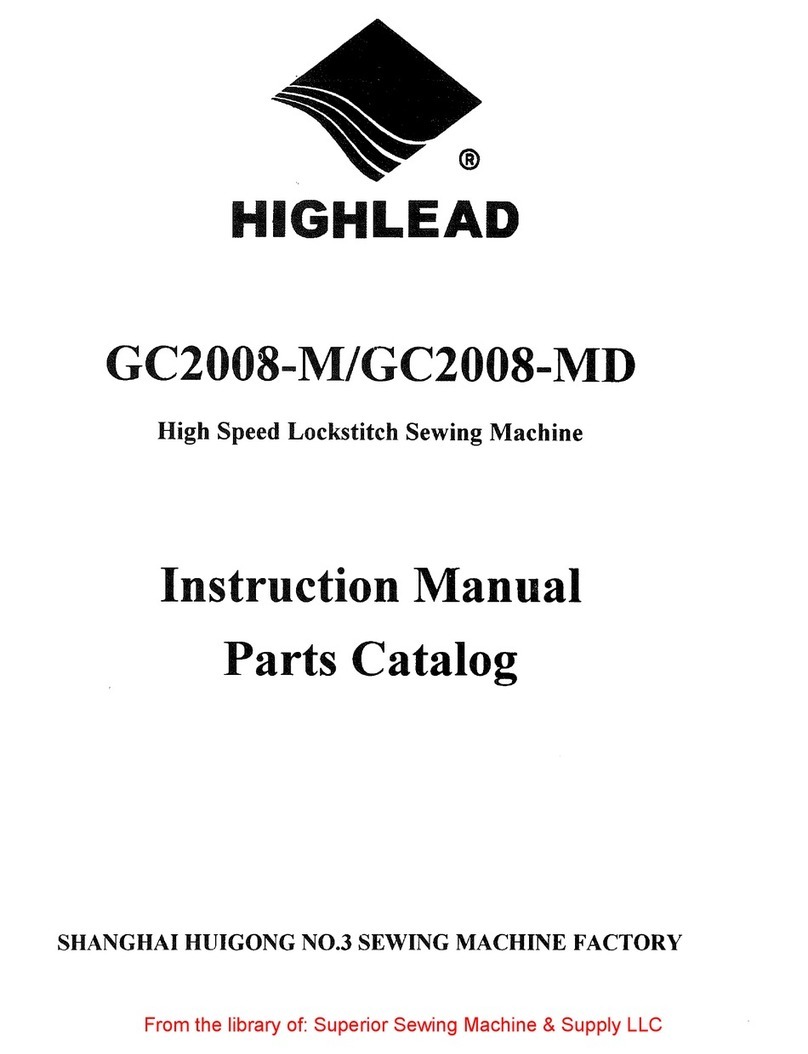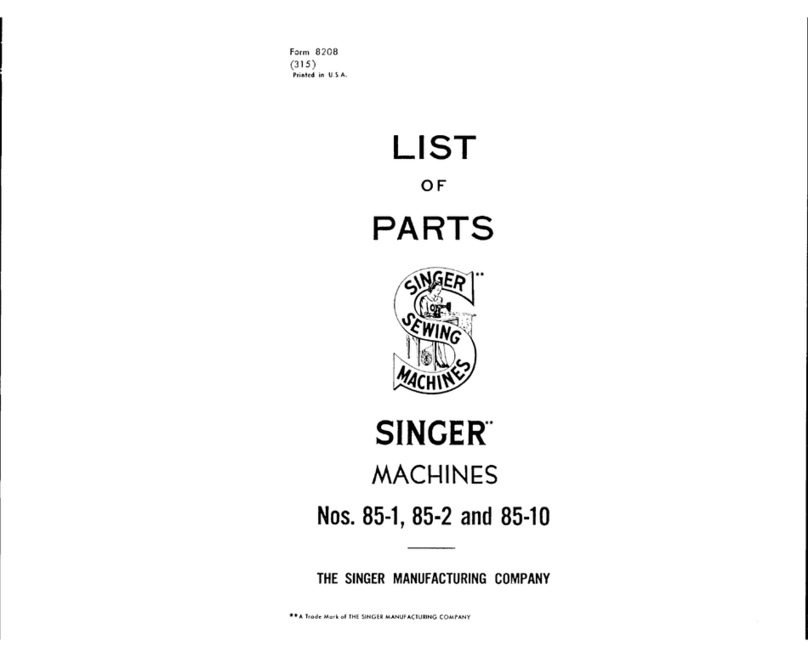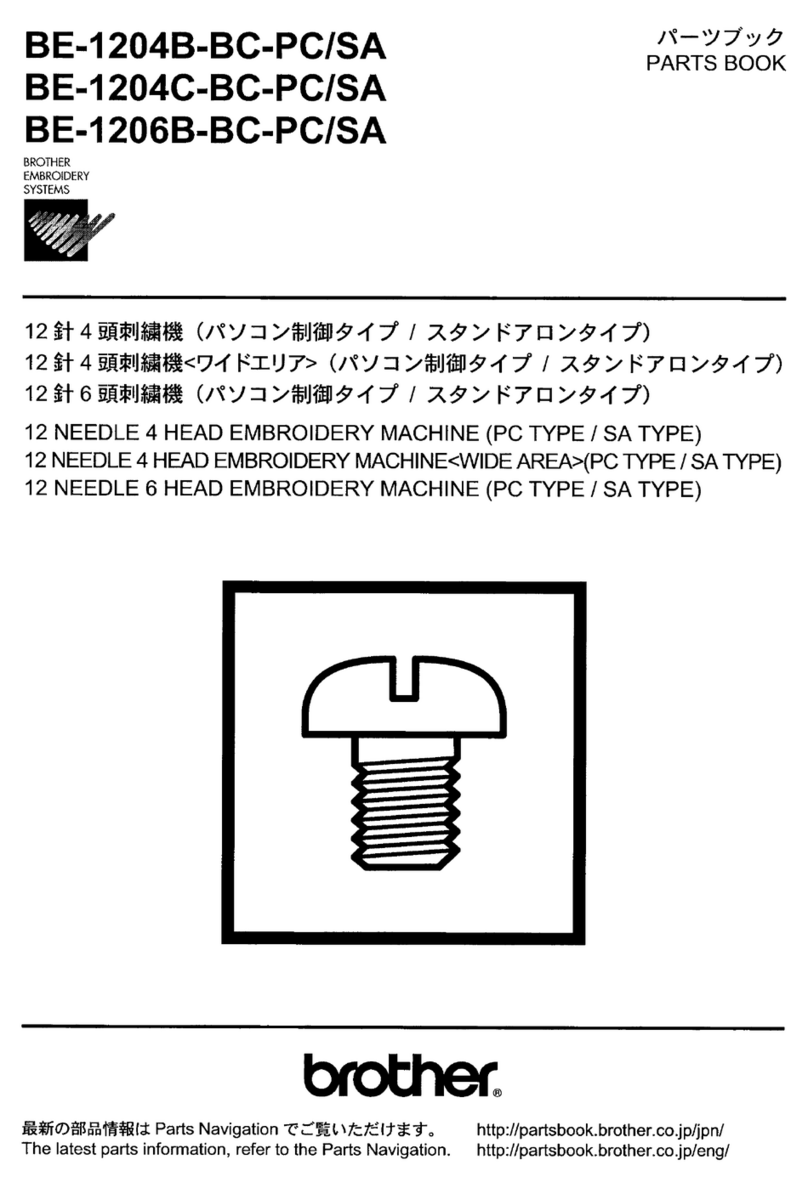
Contents
Contents .................................................................................Chapter – Page
11 Care and maintenance .............................................................................................. 11 - 1
11.01 Cleaning ......................................................................................................................11 - 1
11.02 Lubricating the hook .................................................................................................... 11 - 2
11.03 Oiling the zigzag drive ................................................................................................. 11 - 3
11.04 Cleaning the air filter of the air-filter / lubricator ........................................................... 11 - 4
11.05 Checking/adjusting the air pressure ............................................................................ 11 - 4
12 Adjustment ................................................................................................................ 12 - 1
12.01 Notes on adjustment................................................................................................... 12 - 1
12.02 Tools, gauges and other accessories for adjusting ...................................................... 12 - 1
12.03 Abbreviations .............................................................................................................. 12 -1
12.04 Check and adjustment aid ........................................................................................... 12 - 2
12.05 Adjusting the basic machine ....................................................................................... 12 - 3
12.05.01 Balancing weight ......................................................................................................... 12- 3
12.05.02 Centering the needle in the needle hole (in sewing direction) ..................................... 12 - 4
12.05.03 Parallel guiding of the needle bar ................................................................................ 12 - 5
12.05.04 Locking lever ............................................................................................................... 12 - 6
12.05.05 Zero stitch and zigzag stitch scale ............................................................................... 12 - 7
12.05.06 Centering the needle in the needle hole (crosswise to sewing direction).................... 12 - 8
12.05.07 Zigzag stitch width ...................................................................................................... 12- 9
12.05.08 Multi-stitch movement (only on the PFAFF 939 U) ..................................................... 12 - 10
12.05.09 Zigzag stitch movement (only on the PFAFF 3704-2/..) ............................................... 12 - 11
12.05.10 Needle penetration symmetry (only on the PFAFF 3704-2/..) ...................................... 12 - 12
12.05.11 Zigzag movement (only on the PFAFF 939 U) ............................................................. 12 - 13
12.05.12 Target positioning sensor (only on the PFAFF 939 U) .................................................. 12 - 14
12.05.13 Needle position adjustment lever ................................................................................ 12 - 15
12.05.14 Adjustment wheels for differential feed (only on the PFAFF 939 U) ........................... 12 - 16
12.05.15 Zeroing the differentiatio (only on the PFAFF 939 U) ................................................... 12 - 17
12.05.16 Differential feed synchronisation (only on the PFAFF 3704-2/..) .................................. 12 - 18
12.05.17 Position of the stitch length adjustment wheel on the PFAFF 939 U. ......................... 12 - 19
12.05.18 Position of the stitch length adjustment wheel on the PFAFF 3704-2/.. ...................... 12 - 20
12.05.19 Zeroing the main feed (rear feed dog) on the PFAFF 939 U ........................................ 12 - 21
12.05.20 Zeroing the main feed (rear feed dog) on the PFAFF 3704-2/.. .................................... 12 - 22
12.05.21 Zeroing the differential feed (front feed dog) on the PFAFF 939 U .............................. 12 - 23
12.05.22 Zeroing the differential feed (front feed dog) on the PFAFF 3704-2/.. ......................... 12 - 24
12.05.23 Torsion spring of the reverse feed lever on the PFAFF 939 U ..................................... 12 - 25
12.05.24 Torsion spring of the reverse feed lever on the PFAFF 3704-2/.. ................................ 12 - 26
12.05.25 Torsion spring of the differentiation regulating shaft on the PFAFF 939 U .................. 12 - 27
12.05.26 Torsion spring of the differentiation regulating shaft on the PFAFF 3704-2/.. .............. 12 - 28
12.05.27 Feeding motion of the main and differential feeds ...................................................... 12 - 29
12.05.28 Lifting stroke of the main and differential feed dogs ................................................... 12 - 30
12.05.29 Height of the main and differential feed dogs ............................................................. 12 - 31
12.05.30 Drive belt in the gearbox housing ................................................................................ 12 - 32
12.05.31 Hook bearing bracket .................................................................................................. 12 - 33
12.05.32 Hook lubrication .......................................................................................................... 12 - 34
